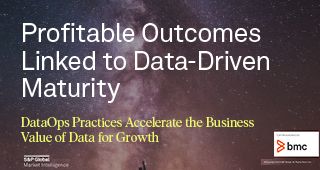Scan any business or tech headline right now, and you’re likely to see artificial intelligence (AI) and machine learning (ML), and more specifically the rising niches of GPT and LLMs (generative pre-trained transformer and large language models). GPT and LLMs distill data and return content in natural language, whether as longform narrative, auto-populated answers to questions, or even imagery or videos, all at super-fast speeds. While there’s still much to sort through on what these technologies mean for business, tech, politics, ethics, and more, one thing is clear—they’re breaking new ground for data.
AI, GPT, and LLMs live and die by data. They analyze it, learn from it, and create it, both leveraging and adding to its already explosive growth. And right now, businesses are generating, accumulating, and retaining mountains of it—and spending a considerable amount of money to do so. But to what end?
According to IDC, “Despite spending $290 billion globally on technology and services to increase decision velocity, 42 percent of enterprises report that data is underutilized in their organizations,” and a recent IDC Global Data Sphere predicts that by 2026, seven petabytes of data will be created every second. Boston Consulting Group says the comprehensive costs around data are equally staggering, as “spending on data-related software, services, and hardware—which already amounts to about half a trillion dollars globally—is expected to double in the next five years.”
It’s time to put all that juicy data you’ve collected to work, and investing in AI technologies can help you get there. While GPT and LLM solutions are gaining a reputation for what they can create, they’re also being put into practice for DataOps practices and analytics solutions that can help you make sense of all that data in the first place. Today’s data is so complex that organizations cannot unravel it without the power of AI.
As I covered in my previous blog, DataOps is all about getting your arms around your data by improving data quality, gaining better business insights, and expanding innovation and cloud efficiency. AI and AI-derived technologies can help on all three fronts.
AI can be used to collate, contextualize, and analyze your hard-won proprietary data and then help you use it to learn about your business and your customers. With AI combing through data, you can uncover new insights that were previously inconceivable even a few years ago—and make informed decisions about which data is no longer needed, still missing, needs more details, and so on. From there, that data can be used to train GPT and LLM tools that advance and expand your business and become the targeted solutions and services your customers crave.
The Eckerson Group recently polled data practitioners on LinkedIn and discovered that 43 percent already use LLMs to assist data engineering. In a second poll, 54 percent said they use ChatGPT to help write documentation, 18 percent use it for designing and building pipelines, and another 18 percent are using it to learn new techniques.
Sitting on a mountain of data gets you nowhere if you don’t know what’s in it. With data accumulations surpassing our capacity to sort through, understand, quantify, and qualify it, investing in AI/ML technologies is the way forward. These technologies can help you dig into all that data and yield valuable insights to better understand your business, discover where to expand or change course, identify new opportunities, and ultimately deliver the solutions your customers and stakeholders want.
Making the most of GPT and LLMs relies on a solid data management foundation enabled by the people, process, and technology shifts of a DataOps strategy and methodology. Learn more about how organizations are yielding value from data in Profitable Outcomes Linked to Data-Driven Maturity, a BMC-commissioned study by 451 Research, part of S&P Global Market Intelligence.







